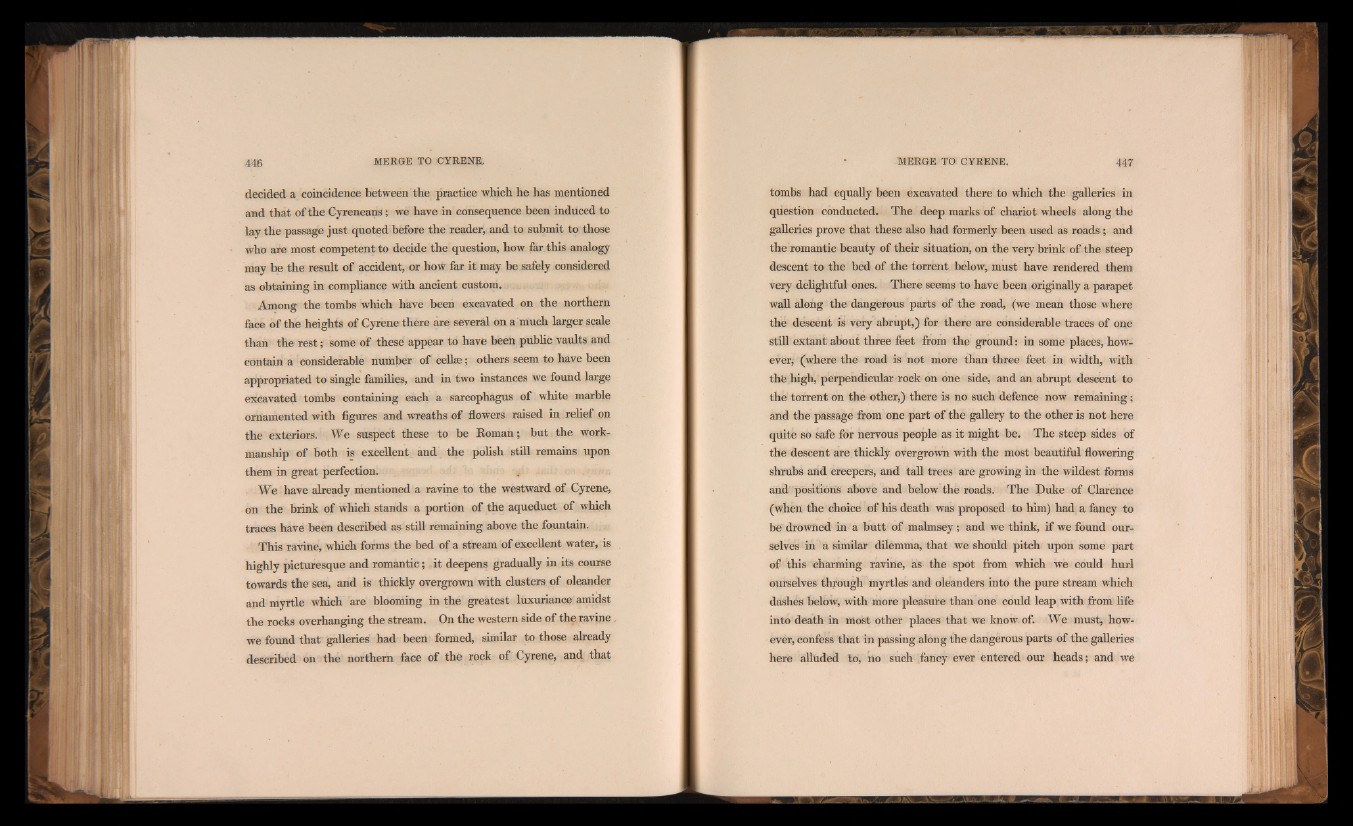
decided a coincidence between the practice which he has mentioned
and that of the Cyreneans; we have in consequence been induced to
lay the passage just quoted before the reader, and to submit to those
who are most competent to decide the question, how far this analogy
may be the result of accident, or how far it may be safely considered
as obtaining in compliance with ancient custom.
Among the tombs which have been excavated on the northern
face of the heights of Cyrene there are several on a much larger scale
than the re s tsom e of these appear to have been public vaults and
contain a considerable number of cell®; others seem to have been
appropriated to single families, and in two instances we found large
excavated tombs containing each a sarcophagus of white marble
ornamented with figures and wreaths of flowers raised in relief on
the exteriors. We suspect these to be Roman; but the workmanship
of both is excellent and the polish still remains upon
them in great perfection. ,
We have already mentioned a ravine to the westward of Cyrene,
on the brink of which stands a portion of the aqueduct of which
traces have been described as- still remaining above the fountain.
This ravine, which forms the bed of a stream of excellent water, is
highly picturesque and romantic; it deepens gradually in its course
towards the sea, and is thickly overgrown with clusters of oleander
and myrtle which are blooming in the greatest luxuriance amidst
the rocks overhanging the stream. On the western side of the ravine
we found that galleries had been formed, similar to those already
described on the northern face of the rock of Cyrene, and, that
tombs had equally been excavated there to which the galleries in
question conducted. The deep marks of chariot wheels along the
galleries prove that these also had formerly been used as roads ; and
the romantic beauty of their situation, on the very brink of the steep
descent to the bed of the torrent below, must have rendered them
very delightful ones. There seems to have been originally a parapet
wall along the dangerous parts of the road, (we mean those where
the descent is very abrupt,) for there are considerable traces of one
still extant about three feet from the ground: in some places, however;
(where the road is not more than three feet in width, with
the high, perpendicular rock on one side, and an abrupt descent to
the torrent on the other,) there is no such defence now remaining;
and the passage from one part of the gallery to the other is not here
quite so safe for nervous people as it might be. The steep sides of
the descent are thickly overgrown with the most beautiful flowering
shrubs and creepers, and tall trees are growing in the wildest forms
and positions above and below the roads. The Duke of Clarence
(when the choice of his death was proposed to him) had a fancy to
be drowned in a butt of malmsey; and we think, if we found ourselves
in a similar dilemma, that we should pitch upon some part
of this charming ravine, as the spot from which we could hurl
ourselves through myrtles and oleanders into the pure stream which
dashes below, with more pleasure than one could leap with from life
into death in most other places that we know of. We must, however,
confess that in passing along the dangerous parts of the galleries
here alluded to, no Such fancy ever entered our heads; and we